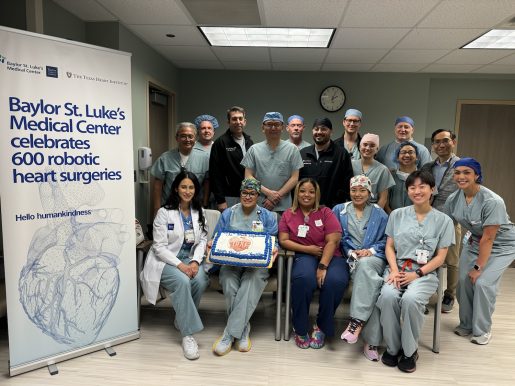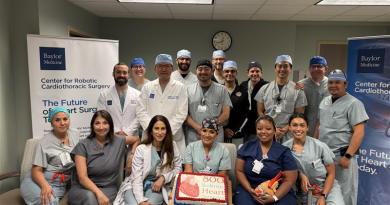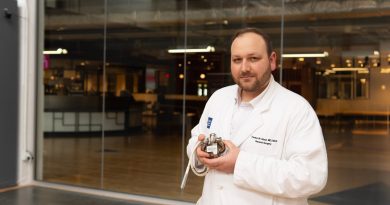Heart surgeon surpasses 600 robotic heart surgeries
 In March, Dr. Kenneth K. Liao achieved a significant milestone by completing his 600th robotic heart surgery. Distinguished as a leading cardiac surgeon in the Texas Medical Center using the da Vinci Robotic Surgical System for treating heart valve and coronary artery disease, Liao stands among a select few highly skilled robotic cardiac surgeons across the United States.
In March, Dr. Kenneth K. Liao achieved a significant milestone by completing his 600th robotic heart surgery. Distinguished as a leading cardiac surgeon in the Texas Medical Center using the da Vinci Robotic Surgical System for treating heart valve and coronary artery disease, Liao stands among a select few highly skilled robotic cardiac surgeons across the United States.
Operating within the Baylor St. Luke’s robotic cardiac surgery program at Texas Heart Institute, Liao has spearheaded remarkable progress. Since he arrived in 2019, he has successfully conducted more than 600 robotic heart surgeries, propelling the program to become one of the fastest-growing in the nation.
“This is a significant milestone for us and, most importantly, for our patients,” Liao said. “Cardiologists increasingly refer their patients to us for robotic cardiac surgery, recognizing its benefits, such as minimal incisions, reduced blood loss and accelerated recovery.”
The innovative robotic technology includes a 3D high-definition scope and robot-controlled instruments within the chest cavity, which enable Liao to execute intricate surgical maneuvers with unparalleled accuracy and delicacy within the heart. The advantages of robotic cardiac surgery are minimal incisions, less blood loss, alleviated pain, reduced risk of complications (such as stroke and infection) and quicker recovery.
Liao and his adept team primarily perform two prevalent robotic surgeries:
- Mitral valve repair: This procedure involves correcting the structural defect of the valve while preserving the function, often by excising excess tissue, reshaping and reconstructing the valve and reinforcing it with a band or ring.
- Coronary artery bypass grafting (CABG): Aimed at treating coronary artery disease, CABG entails harvesting healthy arteries from within the chest wall and grafting them onto coronary arteries to bypass blockages and enhance blood flow to the heart. Remarkably, these surgeries are conducted while the heart remains beating.
For Liao, conducting robotic heart surgery has become second nature. With a career spanning 20 years in these procedures, he embraced robotic surgical technology as soon as it gained approval from the U.S. Food and Drug Administration.
“The magnification provided by the technology offers a tenfold enhancement of our vision, allowing us to discern valve pathology and artery anatomy with unparalleled clarity,” Liao said. “Furthermore, the use of fine-tipped instruments eliminates the need for direct manual intervention within the chest cavity, resulting in minimal tissue trauma, negligible blood loss and swifter recovery for our patients.”
By Tiffany Harston, communications specialist in the Michael E. DeBakey Department of Surgery



